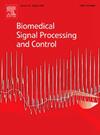DR-CapsNet: deep residual capsule network with dynamic routing for automated identification of hepatocellular carcinoma and cirrhosis in CT images
IF 4.9
2区 医学
Q1 ENGINEERING, BIOMEDICAL
引用次数: 0
Abstract
Hepatocellular carcinoma (HCC) diagnosis in CT images is challenging due to the overlapping imaging features with cirrhosis, particularly in early-stage small nodules, where rapid differentiation requires both morphological sensitivity and computational efficiency. To address this, we propose DR-CapsNet, a deep residual capsule network that combines lightweight residual blocks with dynamic routing mechanisms. The residual module alleviates gradient degradation through skip connections while enhancing the extraction of high-level image features, whereas the capsule framework leverages vector neurons and dynamic routing to model hierarchical part-whole relationships between cirrhotic nodules and HCC lesions. The dynamic routing mechanism iteratively refines coupling coefficients to establish affine-invariant spatial correlations across multi-scale capsule layers, allowing for precise differentiation of subtle morphological variations. Experimental results indicate that DR-CapsNet outperforms existing state-of-the-art methods in both accuracy and inference speed. Moreover, it exhibits exceptional robustness, even under limited training conditions (400 samples) and class imbalance (1:4 ratio) challenges. Overall, DR-CapsNet presents an accurate, efficient, and robust solution for the diagnosis of hepatocellular carcinoma (HCC), particularly in clinical settings with constrained resources.
DR-CapsNet:基于动态路由的深度残留胶囊网络,用于CT图像中肝细胞癌和肝硬化的自动识别
肝细胞癌(HCC)的CT诊断具有挑战性,因为其影像学特征与肝硬化重叠,尤其是早期小结节,其快速鉴别需要形态学敏感性和计算效率。为了解决这个问题,我们提出了DR-CapsNet,这是一个将轻量级剩余块与动态路由机制相结合的深度剩余胶囊网络。残差模块通过跳过连接减轻了梯度退化,同时增强了高级图像特征的提取,而胶囊框架利用向量神经元和动态路由来模拟肝硬化结节和HCC病变之间的分层部分-整体关系。动态路由机制迭代细化耦合系数,以建立跨多尺度胶囊层的仿射不变空间相关性,从而精确区分细微的形态变化。实验结果表明,DR-CapsNet在准确率和推理速度上都优于现有的最先进的方法。此外,即使在有限的训练条件(400个样本)和类不平衡(1:4比例)挑战下,它也表现出出色的鲁棒性。总的来说,DR-CapsNet为肝细胞癌(HCC)的诊断提供了一个准确、高效和可靠的解决方案,特别是在资源有限的临床环境中。
本文章由计算机程序翻译,如有差异,请以英文原文为准。
求助全文
约1分钟内获得全文
求助全文
来源期刊

Biomedical Signal Processing and Control
工程技术-工程:生物医学
CiteScore
9.80
自引率
13.70%
发文量
822
审稿时长
4 months
期刊介绍:
Biomedical Signal Processing and Control aims to provide a cross-disciplinary international forum for the interchange of information on research in the measurement and analysis of signals and images in clinical medicine and the biological sciences. Emphasis is placed on contributions dealing with the practical, applications-led research on the use of methods and devices in clinical diagnosis, patient monitoring and management.
Biomedical Signal Processing and Control reflects the main areas in which these methods are being used and developed at the interface of both engineering and clinical science. The scope of the journal is defined to include relevant review papers, technical notes, short communications and letters. Tutorial papers and special issues will also be published.
 求助内容:
求助内容: 应助结果提醒方式:
应助结果提醒方式:


